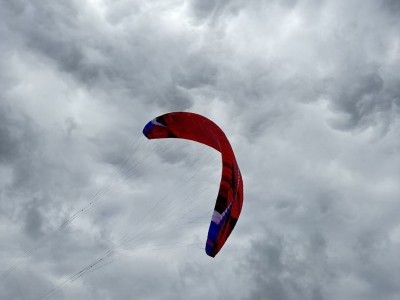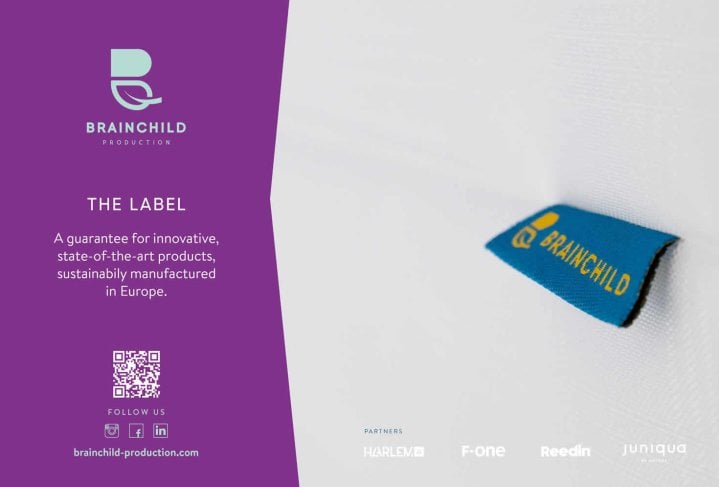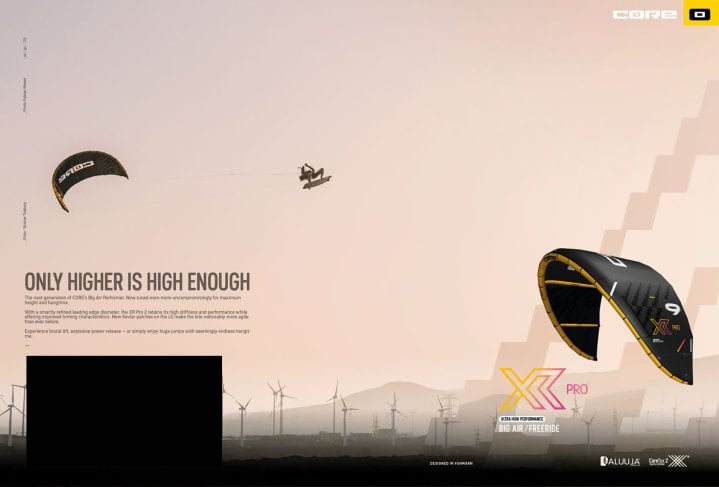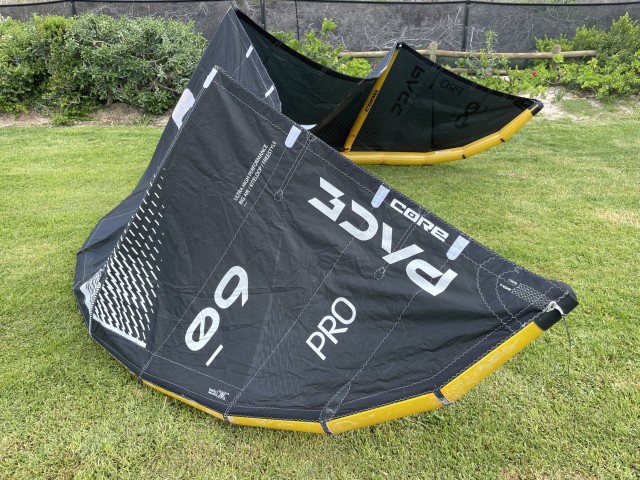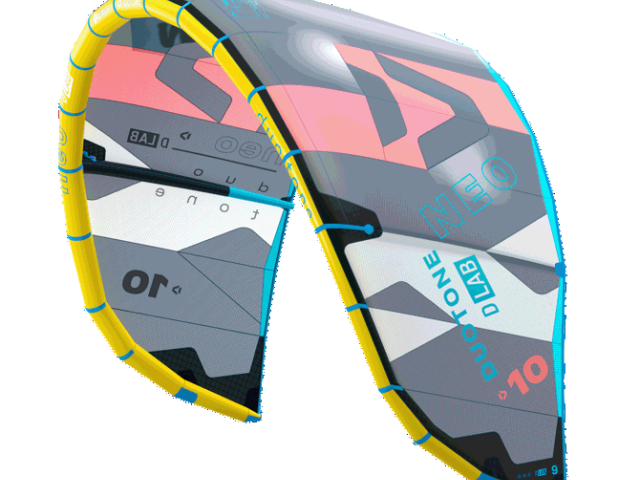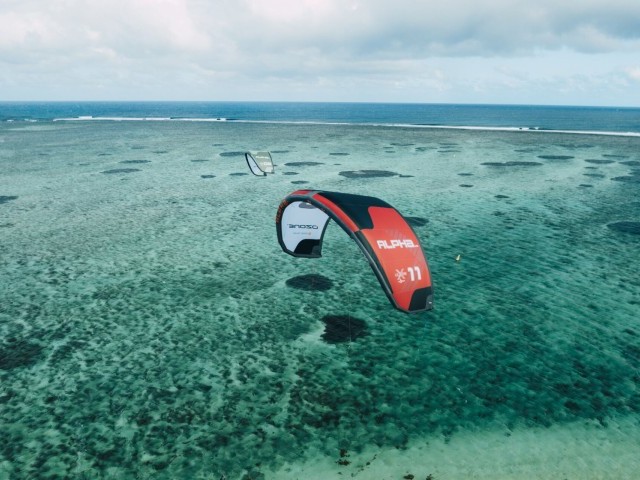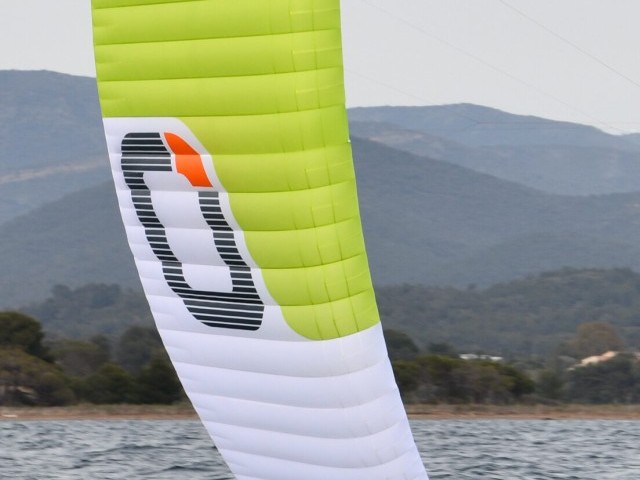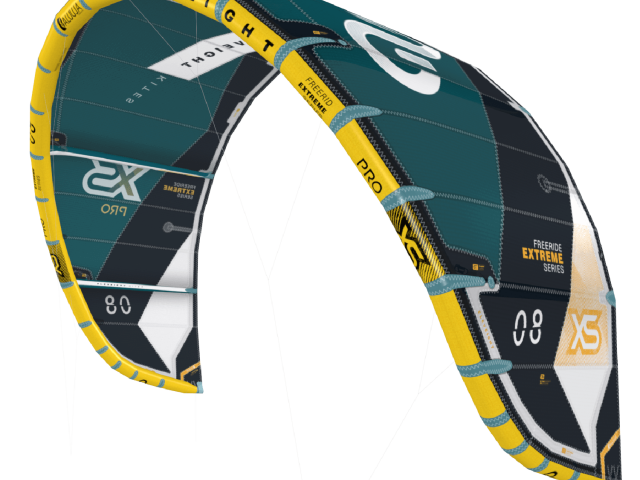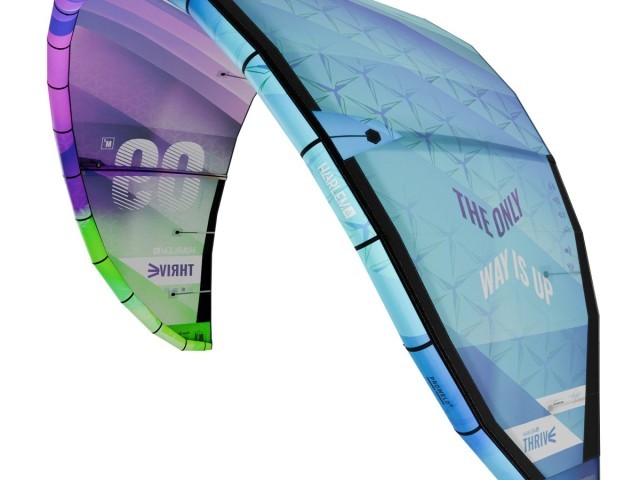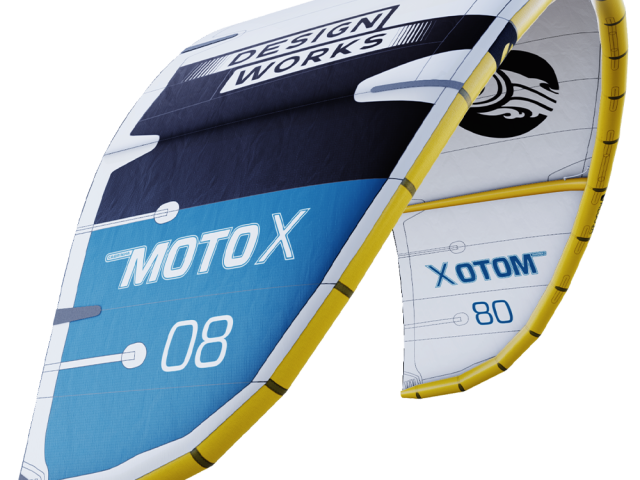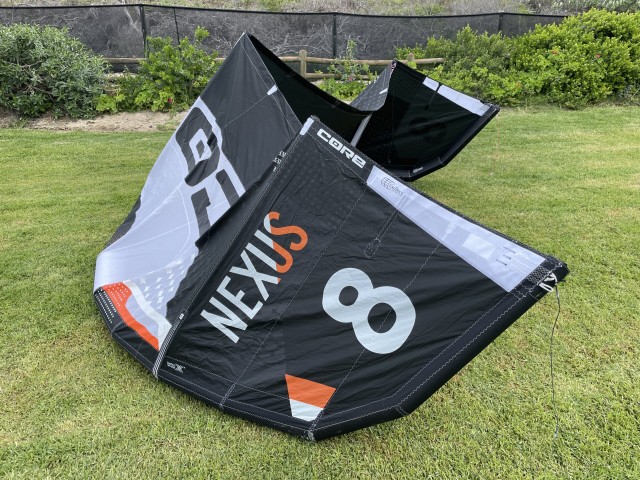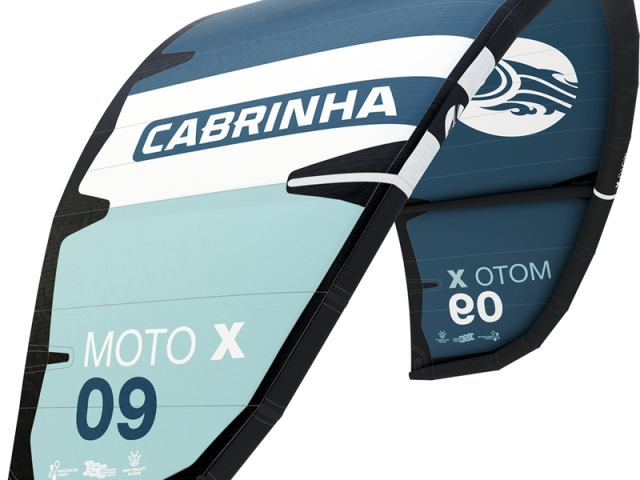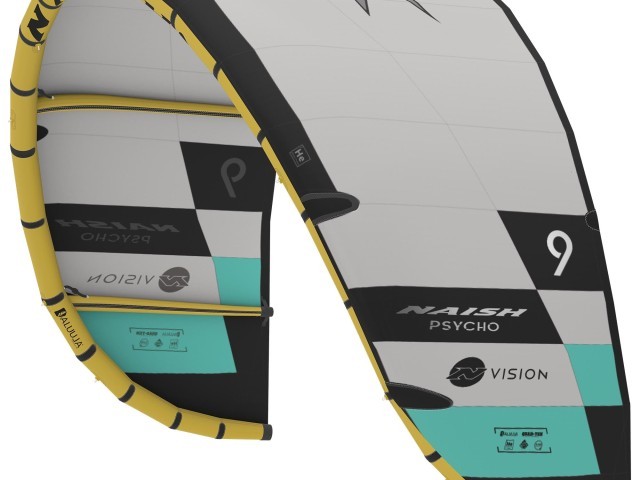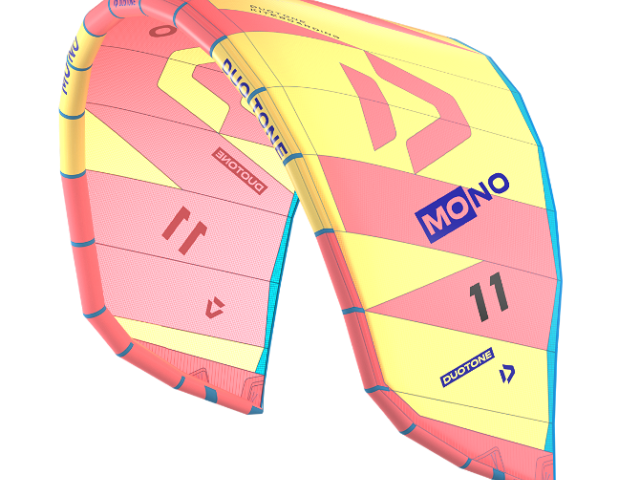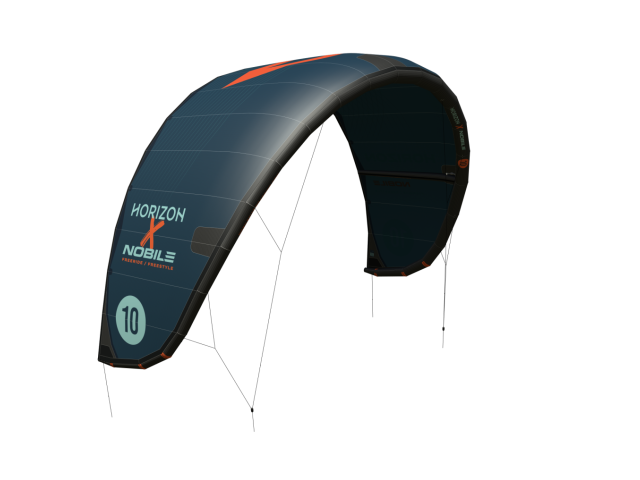At A Glance
It is pertinent that the Airwave Vida test should be published in this issue, given that we are around two months away from kiteboarding’s debut in the Olympics in the form of Formula Kite. Whilst a small selection of brands has been competing to produce an IKA-registered design for use by Olympians, Airwave has made it their mission to bring that race course high-aspect foil kite design performance in a more accessible package.
Ease of use wasn’t just a focus of Airwave with regard to flying characteristics but in all aspects of the kite’s operation and storage. High-performance foil kites with racing in mind must handle huge speed ranges/wind ranges and high loads. These loads must be distributed appropriately, and the kite profile must be adequately supported so that the kite profile does not distort away from the designer’s intended shape under load. There is, however, a delicate balance to achieve. Increased bridle complexity will better distribute loads, and increased material use, heavier weight fabrics, or battens will increase the cell's structural stiffness. Still, these solutions increase the kites' aerodynamic drag and weight. Airwave has used its in-house simulation software to model the kite's structural response to loading in combination with and in response to airflow modelling. This has allowed them to maintain a simple and minimalistic bridle layout, avoid using composite rods and maintain the profile stiffness using a complex ‘three-piece diamond internal structure’ between the cells. The lack of composite rods means the kite can still be packed into a very compact package, convenient for day-to-day sessions and international travel. You won’t need to buy an estate or van to go with your new kite purchase, which can be true of dedicated race kites!
Given that ease of handling and depower were high priorities in the design brief for the Vida, it was also destined to become a capable airstyle machine. The high aspect ratio and race-oriented foil kite design are bound to have an enormous lift on tap, but can ultimate efficiency be combined with agility?
Sizes: 15m, 10m (coming soon)
In The Air
Whilst not directly related to its flight characteristics, I think it is worth mentioning that the Vida is probably the easiest closed-cell high-aspect foil kite I’ve ever launched. The kite was supplied kite only (any dedicated foil kite user knows it is easier just to leave the bar rigged to the kite to prevent tangles!). Despite this, thanks to the simple bridle, the rigging was trouble, and the launch was quick and unintimidating. The cells inflated quickly, and the kite reached the top of the wind window straight away, even before fully inflated, and depower was already available.
I was able to try the Vida in a variety of conditions on both a twintip and foil. The initial feeling and handling of the Vida when on the beach, entering the water and board starting were fairly characteristic of a high-aspect foil kite. It was smooth and slow with minimal steering input and on the spot and pivotal with more generous steering input. Things changed once riding and generating line tension. The response to input became much quicker, and the turning style became more progressive and arcing.
The Vida wants to accelerate and ride fast regardless of your board choice. Even on a twintip, the tension created by edging against the kite is translated into forward speed, and this forward speed creates the apparent wind, resulting in more power if you keep the bar in! This results in a very impressive light wind performance. A very impressive light wind low end is easily accessible on a foil. You'll be out in some marginal winds if you’re confident with a quick board start and can get up on the foil and lean against the kite quickly. More piloting skill and concentration are required to get the most out of the low end on a twin tip, and make more use of the entire wind window as you get up to speed.
The Vida does fly far forward in the wind window, and when on foil, you naturally ride upwind at angles very close to the wind. When pushing the light wind potential on a twintip, you do have to be aware of your riding angle. As someone who likes to ride quickly on a twintip, I found myself generating apparent wind to such an extent that the kite began to move back deeper in the wind window as my riding speed was probably more than double the wind speed at that point! A couple of 40mm fins don’t quite provide the same directional control as a foil mast and foil…when you ride within the more typical recommended wind range, the Vida propels you upwind exceptionally well.
The Vida excels through the tacks and in the jumps because it produces and sustains so much lift. If performing tacks at speed the lift allows you to convert all your forward momentum into distance into the wind as the kite will support your weight and remove the need to maintain lift from the foil. If you’re less confident in the tacks, you can execute a slow transition from one side of the wind window to the other with the kite, and it will hold you up even if you’re riding slowly and don’t have much lift from the foil. When jumping, you get a vertical lift with plenty of hang time. I didn’t need to move the kite too much on take-off, which allowed me to concentrate on my body movements, rotations, or board-offs instead of worrying about the kite. How much steering input was required for redirection depended on how powerful you were (confident redirection is required in light winds). However, as long as you got that right, the landings were laughably gentle, which is incredibly comforting when landing on foil.
The Vida has plenty of on-the-bar depower, even when riding at speed and with plenty of line tension. This makes it comfortable even in gusty winds when riding. It isn’t as forgiving should you make a mistake or a nasty gust hit you when you aren’t moving, and the kite ends up with no line tension. It doesn’t drift back into the wind window as easily as an LEI would when you lose line tension and I ended up with the kite in the water on several occasions. On the plus side, I didn’t have much trouble getting the kite back in the air with a few pulls on the front lines as it released from the water easily once you got the leading edge facing the sky.
Overall
The Vida represents a solution for a number of customers. If you’re a kitefoil enthusiast who likes to go fast, a kitefoil/twintip airstyler wanting to massively expand their wind range or someone that is even curious about any of the above, this could well be the next kite purchase for you. Airwave has created a pretty user-friendly high-aspect foil with the associated high performance, but without pigeonholing itself into a single use case.
This review was in Issue 105 of IKSURFMAG.
For more information visit Airwave KiteboardingRelated
By Liam Proctor


